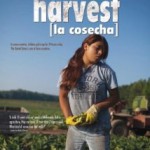CHILD LABOR COALITION PRESS RELEASE: After Saudi Arabia Ratifies Child Labor Convention 138, the Child Labor Coalition Urges Immediate US Ratification
For immediate release: February 28, 2013
Contact: Reid Maki, (202) 207-2820, reidm@nclnet.org
On February 23, Saudi Arabia became the 167th country to ratify ILO Convention 138, setting the minimum age at which children in the country can work. The US must join the world community and ratify the convention.
(Washington) –The 31-member Child Labor Coalition (CLC) welcomes news that Saudi Arabia has become the 167th country to ratify Convention 138, setting a minimum age for work at 15, and it urges the US to ratify the convention as well. Drafted by the members of the International Labour Organization in 1973, Convention 138 asks nations to work to eliminate exploitive child labor and establish minimum ages at which children are allowed to work. Most countries have set those minimums at 15 or 16, with about one-third of nations adopting 14 as the age limit on a temporary basis. Convention 138 allows light work that is not harmful for children who are 13-15. In the US, however, children are allowed to perform strenuous labor for wages in agriculture beginning at the age of 12.
“The United States is dedicated to eliminating exploitive child labor around the world,” noted Sally Greenberg, co-chair of the Child Labor Coalition and executive director of the National Consumers League, which played a crucial role in eliminating many forms of child labor in the US in the 19th and early 20th century. “With 167 countries pledging minimum age restrictions for work at 14, 15, or 16, we need to join the international community and do the same. If Saudi Arabia can ratify protections for child workers, certainly the US should also do so. We must also adopt Convention 138’s prohibitions of harmful and dangerous work by those under 18.”
“Before the US can ratify Convention 138, it must close the loopholes in US child labor law that allow children to work for wages in agriculture at age 12,” noted Norma Flores Lopez, director of the Children in the Fields Campaign for the Association of Farmworker Opportunity Programs and the chair of the CLC’s Domestic Issues Committee. “Farm work is particularly dangerous—with mortality rates four times that of other industries—yet we allow children who are 12 to perform back-breaking labor in the fields for unlimited hours when school is not in session.”
“As a former child migrant farmworker, I know the dangers children in the fields are exposed to—powerful machinery, razor-sharp tools, and pesticide poisoning—to name just a few,” added Flores Lopez. “Child labor has a huge impact on the farmworker community, creating rampant generational poverty as the rigors of the work, migration, and endless school disruptions cause children to tire and drop out of school. With millions of unemployed adults in America, why must we rely on young children to harvest our fruits and vegetables?”
“By continuing to keep children working in the fields, the US causes adult wages in agriculture to remain artificially low, making it nearly impossible for these families to invest in their children and break the cycle of poverty,” noted Judy Gearhart, executive director of the International Labor Rights Forum and chair of the CLC’s International Issues Committee. “The US should take immediate steps to ratify international treaties like Convention 138 and the Convention on the Rights of the Children—both embraced nearly unanimously by United Nations members—that work to increase protections for children.”
“The elimination of child labor has been a goal of educators for many years,” added Dr. Lorretta Johnson, secretary-treasurer of the American Federation of Teachers and a co-chair of the CLC. “Tackling the issue of child labor has gone hand-in-hand with our efforts to ensure that quality education is provided as a right to all children. Here and abroad, the elimination of child labor goes beyond education, and should also include policy changes that address societal poverty and inequality, as well the legal framework that ILO Convention 138 helps provide.”
###
About the Child Labor Coalition
The Child Labor Coalition represents consumers, labor unions, educators, human rights and labor rights groups, child advocacy groups, and religious and women’s groups. It was established in 1989, and is co-chaired by the National Consumers League and the American Federation of Teachers. Its mission is to protect working youth and to promote legislation, programs, and initiatives to end child labor exploitation in the United States and abroad. [The CLC’s website and membership list can be found at www.stopchildlabor.org ]





